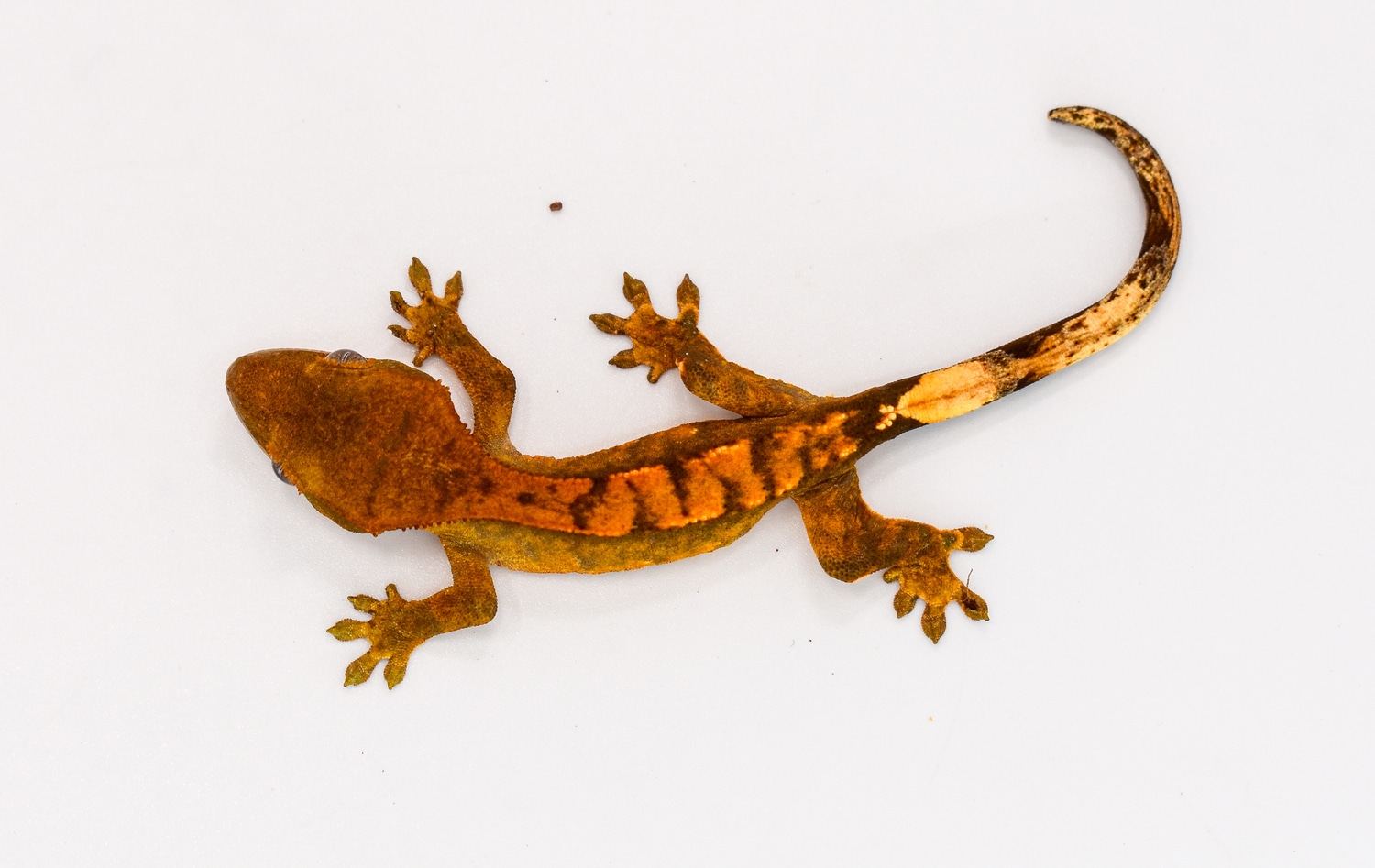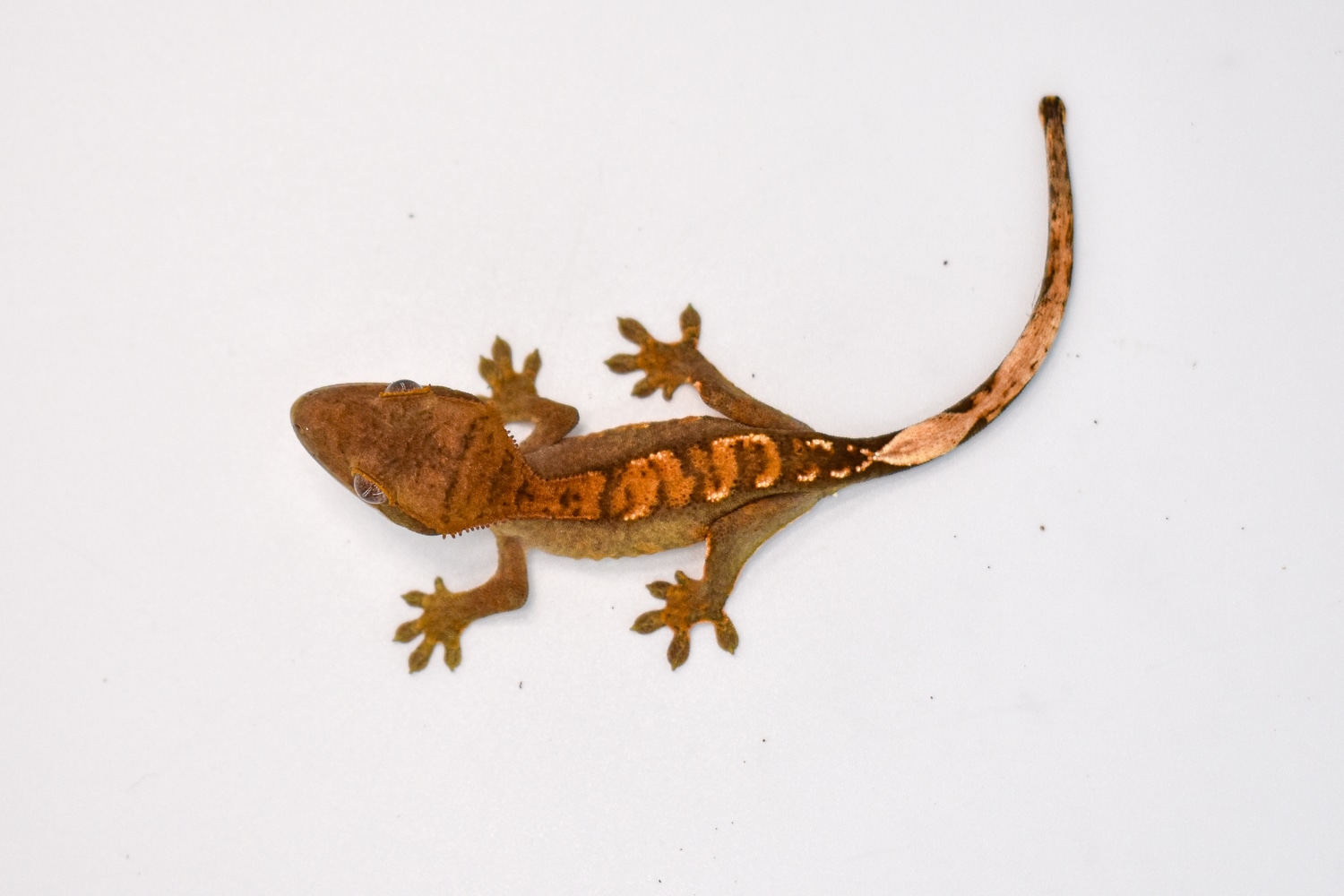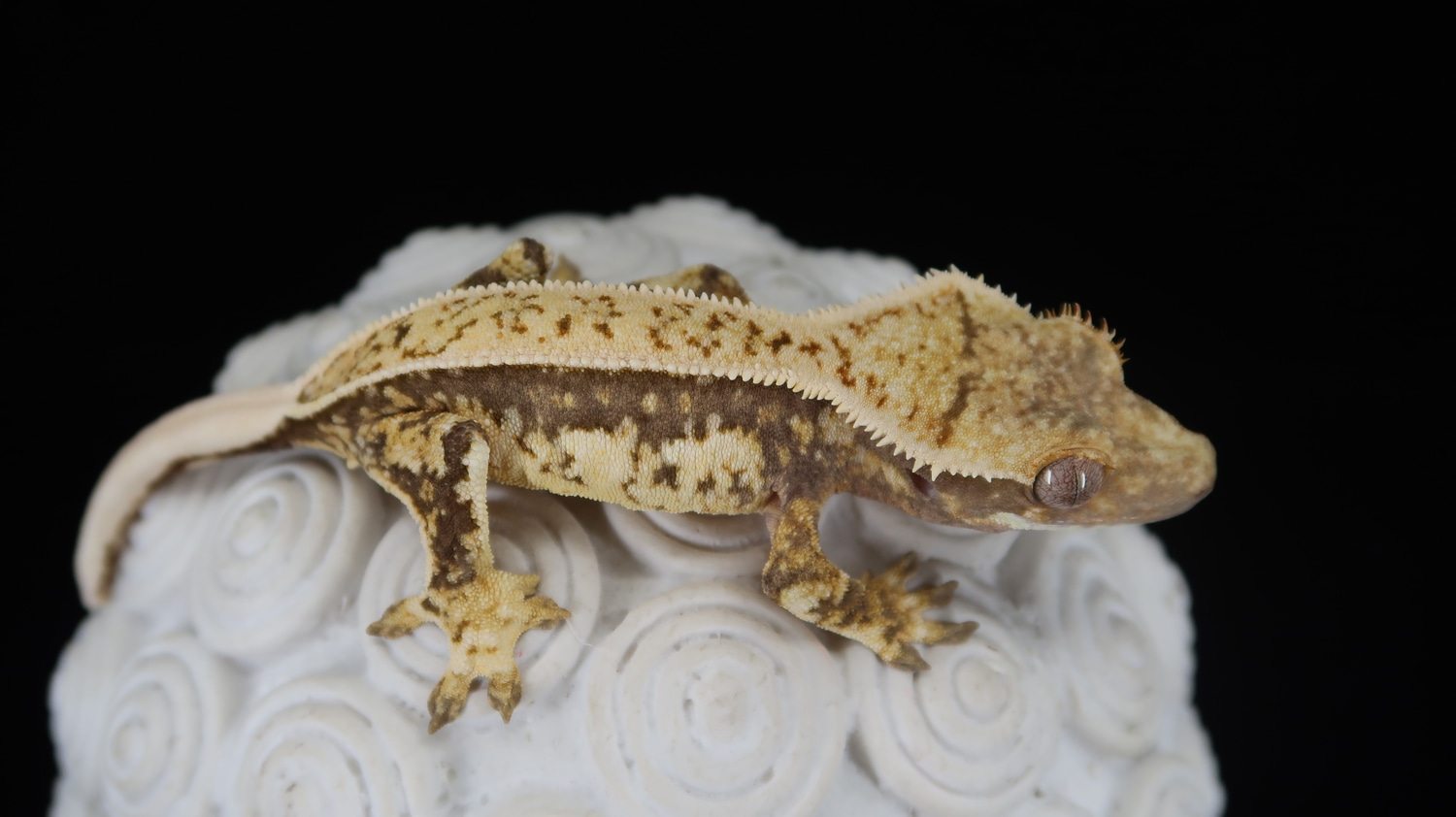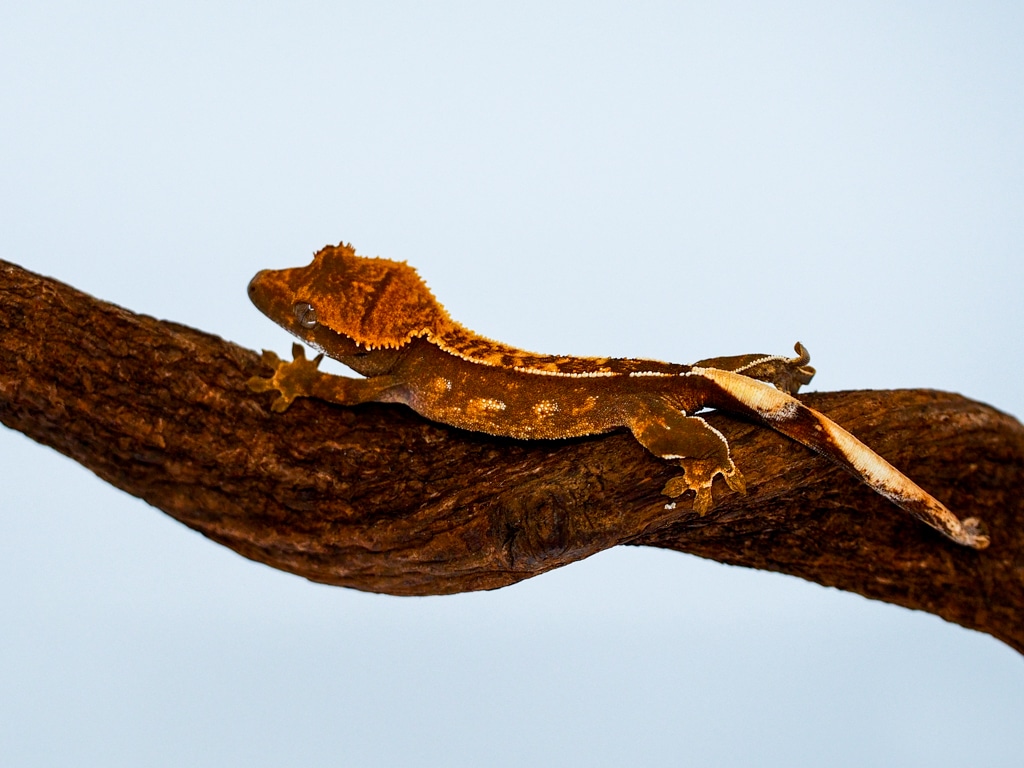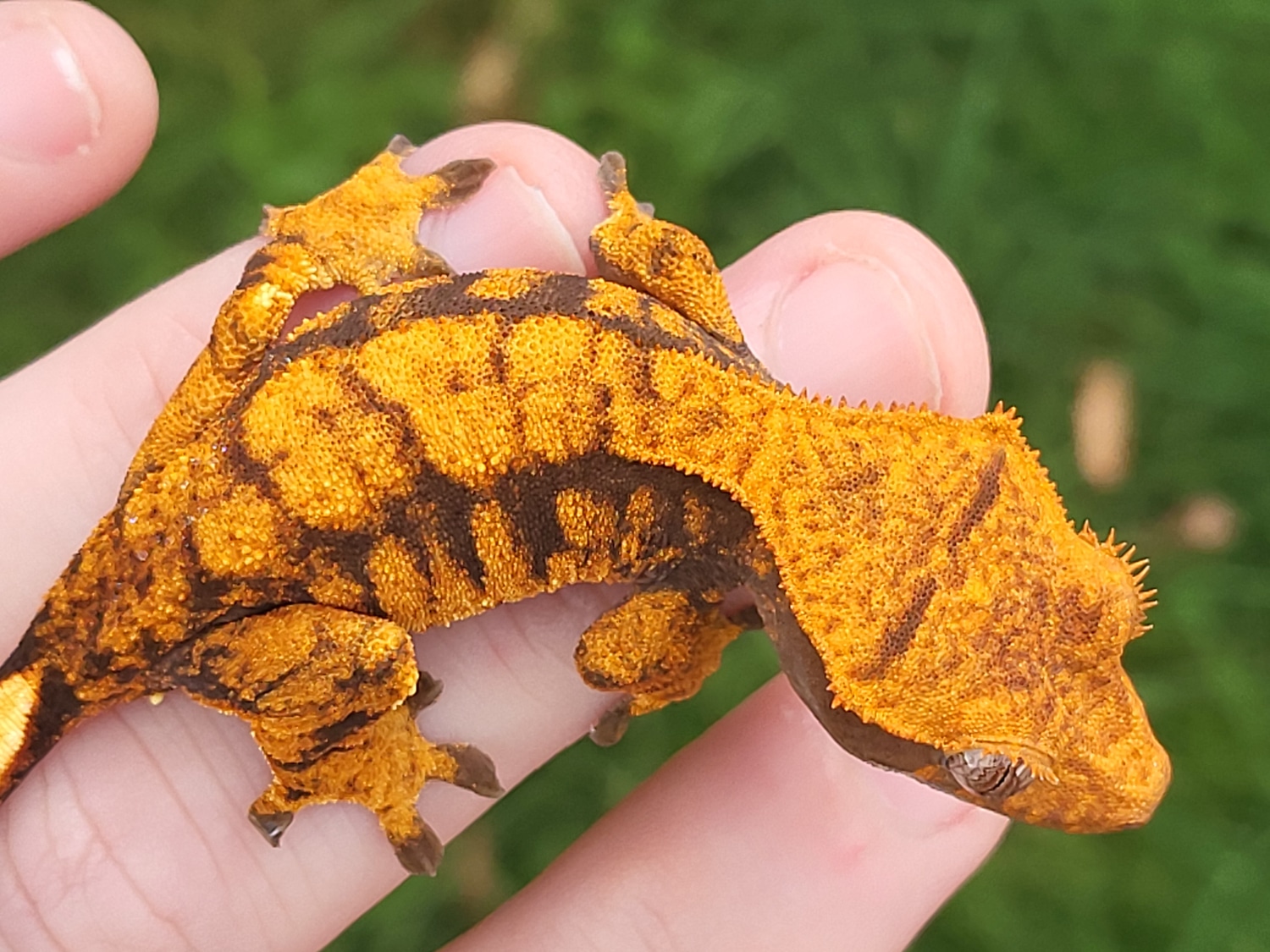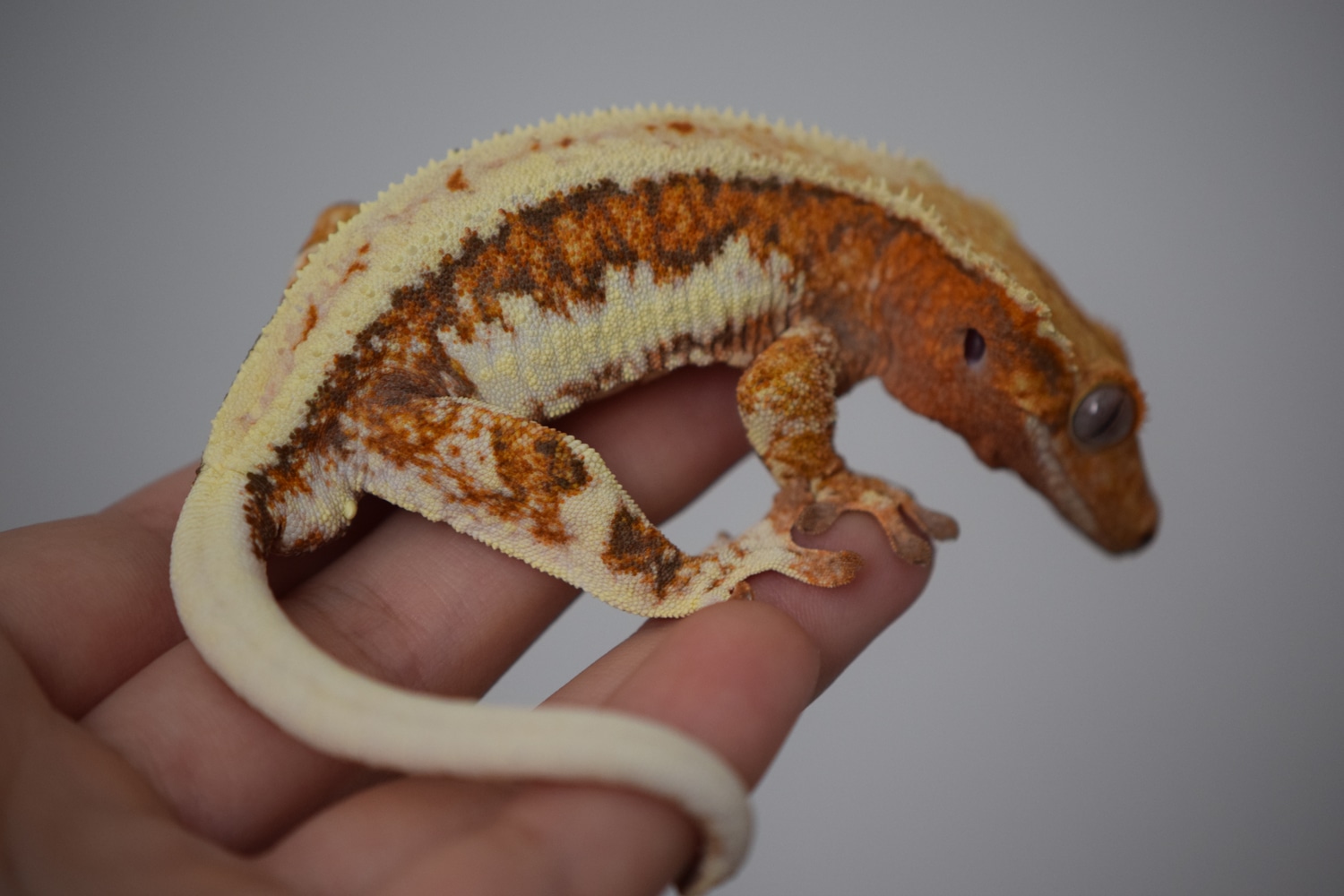Orange Patterning
Type: Dominant
Aliases: OP
First Produced In: Unknown
Availability: Average
Last Updated: 2023-02-22
Do you have any suggestions or corrections for this article?
Click here to contribute feedback
About
Pattern coloration comes in two distinct forms white pattern (WP) and orange pattern (OP). All other color variations are due to expression, selective breeding, and the effects of other traits that contribute to that coloration. White pattern presents between cream to paper white, with cream color being the most common by far. While orange pattern displays between deep reddish-orange to yellow, light orange being the most common. When combined both colors display at the same time, while other traits like whiteout and or whitewall (the more extreme form) causes the additional white pattern to present.[1]
History
No History Yet
Appearance
Body
OP is a yellowish-orange, to tangerine, to redish-orange and all produced in the topmost color layer of the chromatophore. This color has had a long development in the hobby to keep it from fading out as the animal ages. This has been the most common issue with OP and there are a few lines that maintain vibrant orange color through adulthood.[2]
Proven Lines
No known proven lines
Related Traits
Genetically these two forms do not breed allelically but rather non-allelic and can be pushed in separate directions, either exclusively, or together with varying expressions of each. Additional traits contribute to the hue of each and affect development and how long that color lasts through adulthood and into old age. Within a generation or two offspring can be bred more orange or more white to completely orange or completely white with subsequent generations, starting from either of the two colors and using the paired animal with one or the other color.[3]
Combos
-
OP Pinstripe
The color gets restricted and pushed down below the pins, causing extreme patterned animals to occasionally produce a reverse pin characteristic. -
OP Phantom
OP causes a browning coloration to be present and also where we find chocolate coloration in some dark Phantoms. OP produces more patternless looking animals. -
Tiger
Strong Tiger influence causes the pattern on the dorsum to break and form patterns. Chevron-backs were an interesting interaction we noticed early on, where tigering created “V” shapes down the dorsum plane. Weaker tigering causes fewer breaks in the dorsum and wider patterning.

